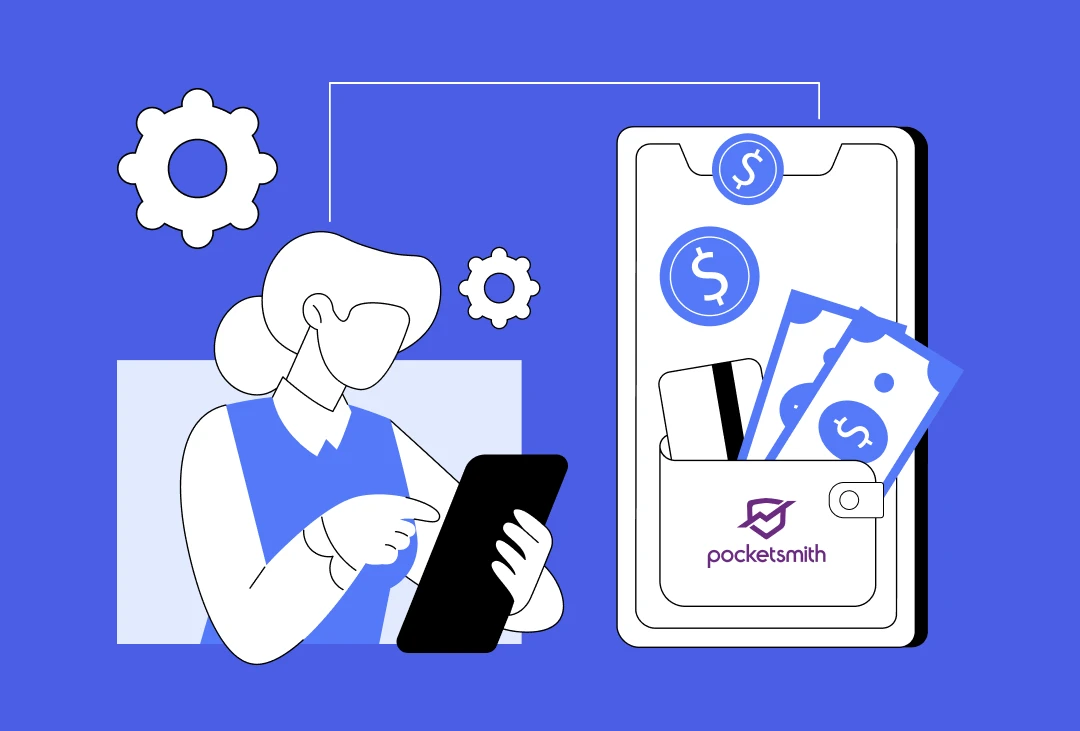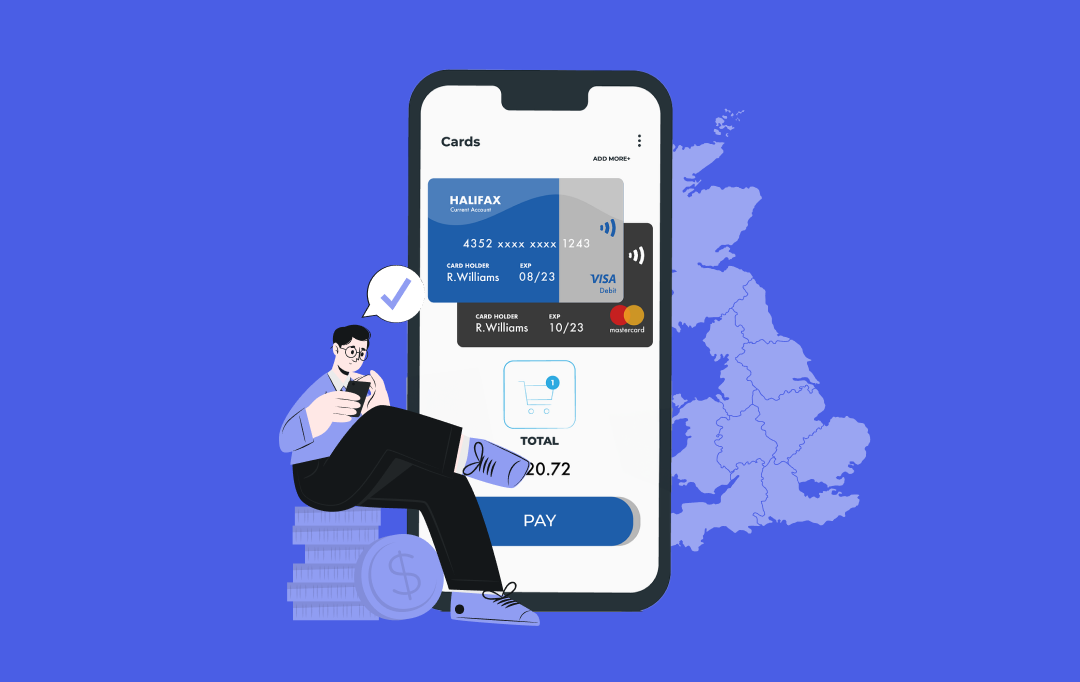- What Is a Loan Management System?
- What Are the Key Benefits of Loan Management Software Development?
- 1. Elimination of Human Error
- 2. Time Optimization
- 3. Digital Report Generation
- 4. Competitive Business Edge
- 5. Easy Lending Procedure
- Features of a Loan Management System
- Loan Origination
- Loan Servicing
- Debt Collection
- Reporting
- How Do You Build Custom Loan Management Software? [Step-by-Step Guide]
- 1. Define Clear Business Goals and Objectives
- 2. Carry Out Thorough Market Research and Analysis
- 3. Finalize the Feature Selection
- 4. Create a User-Centric UI/UX design
- 5. Hire a Dedicated Software Development Firm
- 6. Develop a Minimum Viable Product (MVP)
- 7. Carry Out a Rigorous Quality Assurance Process
- 8. Launch the Product in a Desired Environment
- 9. Post-launch Maintenance and Support
- How Much Does Loan Management Software Development Cost in 2025?
- How Can Appinventiv Help You Build a Robust Loan Management System Software?
- FAQs
- Q. How much does it cost to develop a loan management software?
- Q. How long does it take to create a loan management software?
- Q. How can you choose a reliable development firm for developing your loan management system?
In the financial sector, loan management or lending solutions have been the slowest when it comes to the adoption of digitalization.
Now, even though the lending institutions have migrated from Excel sheets to a digital record book, they are still several steps behind in having a solution that would give a holistic view of their product performance, automate the loan processing stages, and gauge the loan return capabilities of an individual in real-time.
To solve these gaps between a loan provider and complete digitalization, it is recommended to build a loan management system that is robust and easy to use.
As we explore loan management software development in detail, we’ll examine its benefits, essential features, development costs, and step-by-step implementation strategies.
Why should you read it? With digital transformation expanding at a lightning speed, the loan management system software market is witnessing global adoption. According to a report, the loan management software market size was valued at $5.9 billion in 2021 and is expected to reach $29.9 billion by 2031, witnessing a CAGR of 17.8% from 2022 to 2031.

The increasing market size can be attributed to the increased efficiency in lending operations, modernization efforts in banking and financial institutions through digital technologies, and rising end-user adoption due to easy accessibility and global usability.
More efficient and speedier than the legacy systems, a custom loan management system enables lenders to streamline and automate loan origination, processing, and end-to-end management.

What Is a Loan Management System?
An enterprise loan management system is a digital platform that helps lenders automate loan handling processes, from loan application to closing. This type of loan management and mortgage lending platform enables credit unions, banks, payday lenders, mortgage lenders, and other financial institutions to gather and verify customer data faster, offer new loan products, manage the current products, calculate interest rates, measure the loan return capabilities of an individual, etc.
Moreover, this software comes with tools and technology sets that make the process of consumer lending easier by generating reports with detailed analytics and getting key insights a lot easier and more efficiently for the lenders.

Now that we have witnessed the exponential growth of the loan management system market along with its benefits on a broader level, let’s delve deeper into its advantages. Understanding the perks of custom loan management software development can guide you towards building a loan management system that can drive significant benefits for your business.
What Are the Key Benefits of Loan Management Software Development?
The advantages of loan management software development can be seen across various facets. Let us dive into them.

1. Elimination of Human Error
In the lending ecosystem, there is a range of calculations involved. Calculations range from EMI percentage to loan disbursement amount depending on the individual’s credentials and loan duration. These calculations can be error-prone when done manually in spreadsheets of outdated loan software.
A loan management software development project creates systems designed for handling complex calculations and giving correct valuations in almost real time.
2. Time Optimization
Managing a loan can be an extensive process, especially since it involves several steps and lengthy due diligence. Dedicated loan management software development can help you convert all the paperwork and manual tasks to a digital setup, which automates the routine processes and helps the team dedicate their time to other business-focused activities.
3. Digital Report Generation
Automating reports and bringing them to a real-time mode is a valuable feature of a loan management system design. In the lending sector, reports like accounting, invoices, and taxes are generally asked by investors, regulatory bodies, and investors. These reports, which typically have to be submitted in less time, must be 100% accurate. Now, what these loan management software do is that they generate reports in preferred formats very speedily and with the guarantee of high accuracy.
4. Competitive Business Edge
One of the major loan management system benefits is offering businesses a competitive edge in this cut-throat market. A loan processing software can help lenders process applications, assign and monitor more loans, and have a complete look over them right from the loan application stage to their processing. All this with the guarantee of a hack and error-proof system.
With the software handling these activities, the product and IT teams can look at new loan product launches and better their customer relationships – giving them enough space to gain a competitive edge.
5. Easy Lending Procedure
The number of times an individual takes out a loan is very limited. So, once they find a lending institute that makes the process easy for them, they will likely become their returning customers. Using digitized loan management software, businesses can make the application process easy, automate the credibility check, and automate the loan generation system to make disbursals faster.
Features of a Loan Management System
Lending systems are generally built to be scalable. This means you can start with a simple functionality of AI-based KYC and then grow your software from there to a full-fledged loan management solution. However, when we talk about the minimum viable product (MVP) features of a full-fledged solution that meets all the regulatory compliances, it looks something like this –
Loan Origination
It is the process where the borrowers apply for a loan, and the lender processes it. The loan management software features that should be a part of this process are:
- Digital KYC
- Loan document software
- Credit history check
- Provision of different loan types
- Automation of loan applications and processing
- Cloud infrastructure for loan availability and scalability
Loan Servicing
Every loan type is different; they come with different interest rates, payment durations, and due diligence measures. The servicing features of the loan management system enable lenders to calculate the interest, repayment duration, taxation, etc. It also includes sending out payment reminders, monthly statements, and collection of monthly payments.
Debt Collection
Collecting payments is a make-or-break feature for any lending business, and Debt Collection Software integrated into your loan management system can handle it seamlessly. The software should notify you when payments are due from individual borrowers, calculate late fees, perform tax calculations on payments, and send timely reminders to keep borrowers on track. Plus, with third-party integrations, you can add auto-debit functionality to pull payments straight from borrowers’ bank accounts, ensuring you get paid without the hassle.
Reporting
For a lending business, a reporting and analytics feature is needed to create reports on the basis of interactions with other businesses and individuals, look at the profitability of individual products, and the overall direction that your business has taken.
The one element that helps with building the reporting features is cloud integration. Through the cloud, remote sales personnel can easily access the reports and share them.
Deciding upon the loan management software features can become a bit easier when you know the business category you belong to. Let us explain it a little further.
Startups – For small lending firms giving out loans in small quantities, a lending CRM can be useful. It will have a basic level of loan management features like interaction history, borrower management, analytics, team management, managing customer information, etc.
[Also Read: A Comprehensive Guide to Custom CRM Software Development]
Middle-sized companies – They provide complex loans with a range of offerings and a dedicated customer portal. Through the portals, customers can get involved in the process by tracking the loan application process, payments, remaining repayment days, and even interacting with the lending firm.
Large lenders – Institutions like banks and private lenders address millions of borrowers. They require enterprise loan management software development solutions that go beyond basic functionality. They don’t just need full-fledged loan software for private lenders or banks but also keep security as the center focus. So, at Appinventiv, we prefer to carry out cloud-based enterprise loan management software development to ensure that we connect the software with platforms like LOS (Loan Origination System), Experian Hunter, NetBanking Connect, CIBIL, Perfios, PDF Statement Analyzer, etc.
With this, we have addressed the features of the loan management system. Based on these features, let us now quickly look at the step-by-step process of building a loan management software that helps borrowers to be a part of an easy yet a secure lending process.
How Do You Build Custom Loan Management Software? [Step-by-Step Guide]
We have outlined a systematic approach to custom loan management software development that businesses need to follow. In this section, we have discussed in detail each step of building a robust loan management software while offering insights and strategies to help you navigate the process effectively.

1. Define Clear Business Goals and Objectives
Start your loan management system development process by mapping out measurable goals that align with your business vision as well as user requirements. Ensuring clear objectives from the very start is crucial to keep your project on track and ensure its effectiveness.
2. Carry Out Thorough Market Research and Analysis
To create a loan management system that ensures maximum RoI, it’s essential to conduct thorough market research. This phase includes studying the behaviors of your target audience, analyzing the market dynamics and competitors to identify the associated opportunities and challenges.
3. Finalize the Feature Selection
Choosing the right features for your software or application is critical for its success in the cut-throat industry. During this phase of loan management software development, you need to focus on integrating functionalities that are essential for serving your target users effectively while avoiding unnecessary complexities. It is one of the vital stages that affects the overall cost and development time.
4. Create a User-Centric UI/UX design
The UI and UX design are crucial for the success of your app. It’s important to make sure that your app is not only visually appealing but also provides a user experience that is intuitive, engaging, and efficient. A well-designed app or software will enhance the overall user satisfaction and retention rates effectively.
5. Hire a Dedicated Software Development Firm
Now that you have mapped out the necessary app features and finalized an intuitive UI/UX design, it is time to hire a dedicated software development firm. Collaborating with a dedicated development company with years of expertise in the field can help you optimize costs while leveraging cutting-edge technology. A dedicated team, including UI/UX designers, project managers, app developers, and market specialists, can help bring your vision to life efficiently.
6. Develop a Minimum Viable Product (MVP)
After hiring a dedicated development company, it is now time to consider building an MVP of your loan management app that can help validate your concept and gather user feedback. This approach allows you to assess the product’s overall potential in the market while minimizing initial development costs.
7. Carry Out a Rigorous Quality Assurance Process
Prior to the app launch, it is vital to conduct comprehensive testing to identify and rectify any issues. This step helps in optimizing the overall development costs, minimizing the bugs, and enhancing your app’s credibility and reliability.
8. Launch the Product in a Desired Environment
Once the testing is successful and all the platform guidelines are met effectively, it is time to launch your loan management app in the desired environment. Furthermore, it is necessary to ensure that your monetization strategy aligns with platform requirements. Thus, carefully plan the loan management software development process that minimizes disruption and ensures a seamless transition.
9. Post-launch Maintenance and Support
Following the launch of the loan management system, ensure to carry out ongoing maintenance and support. This involves system monitoring, applying updates, addressing user concerns, and implementing enhancements as required. Regular consultation with maintenance and support service providers ensures the software remains secure, operates optimally, and aligns with evolving business needs.
Now that you have looked into the loan management software development process, let us move ahead and help you understand the cost to create a loan management software for your business.
How Much Does Loan Management Software Development Cost in 2025?
The cost to build a loan management software can be anywhere between $45,000 and $200,000, on average.
There are multiple factors that affect the loan management software development cost, including:
- The overall complexity of the software
- The design of the software
- The delivery timeline
- Location of the custom enterprise software development company
- The features to be integrated into the app/software
- The tech stack used
- Security and compliance requirements
- Maintenance and support
Also Read: CashNow-style fast wallet loan app development cost
Coming to the time taken to develop a loan management software, let us look at this tabular view below:
| Tasks Performed During Cloud-based Loan Management System Development | Time Taken for Completion (in Weeks) |
|---|---|
| Requirement gathering and market research | 1-2 |
| Design | 2-6 |
| Backend development | 8-16 |
| Frontend development | 8-16 |
| Deployment | 1-2 |
The number of weeks that it comes down to is 20 to 42 weeks or 5 to 12 months.
[Also Read: How Much Does Loan Lending App Development Cost?]
Now, when you partner with a development firm in Australia or the US, the average cost they would charge will be anywhere from $120-$140 per hour. The same will come down to $50-$80 when you partner with an agency in Asia. This in turn will translate into an average cost of $45,000 and $200,000, or more.
How Can Appinventiv Help You Build a Robust Loan Management System Software?
So here is everything you need to know about loan management software development. It is important for lending businesses to understandknow that the digital lending space is growing in popularity, asand so is the demand for customer satisfaction. Lending firms need to switch to digital and become customer-first.
As leaders in lending software development services, we have extensive experience in developing loan management software solutions, catering to clients across diverse industries. Our team of experts has a robust understanding of the complex challenges associated with loan process management. Therefore, we are well-prepared to assist businesses in optimizing and streamlining their operations.
Our distinguished track record in delivering successful projects allows us to align our strategy to our clients’ unique needs. Committed to providing high-quality loan management software development services that offer value, our experts collaborate closely with clients to comprehensively grasp their specific requirements. We then proceed to design and develop tailored solutions that precisely meet those needs.
As a dedicated FinTech software development company, we help lenders meet the needs of tomorrow’s borrowers today.
Get in touch with us and set off your lending digitalization journey.
FAQs
Q. How much does it cost to develop a loan management software?
A. The cost to create a loan management software can vary from $45,000 to $200,000. There are several factors that impact the overall cost of creating the app, such as the overall complexity of the app, the location of the hired development firm, the features to be integrated, the tech stack used, maintenance and support services required, the UI/UX design of the platform, etc. Get in touch with our FinTech experts to get clear cost estimates based on your custom requirements.
Q. How long does it take to create a loan management software?
A. The time frame to build a web-based loan management software directly depends on its overall complexity. For instance, a highly complex app with an extensive feature set will take around 12 to 14 months to complete. On the other hand, carrying out loan management software development with minimal features will take around 4 to 6 months.
Q. How can you choose a reliable development firm for developing your loan management system?
A. When looking for a team to develop your loan management software, choosing a team with experience, a proven track record of delivering high-quality solutions, and a strong ability to meet your specific business needs is important. In addition to this, it is vital to consider their communication and collaboration skills, as well as their commitment to providing support and maintenance services. This will help ensure you find a team that can effectively develop the software you require.
Beta feature



How Much Does it Cost to Build a Personal Finance App like Pocketsmith?
Imagine an app that knows when your rent is due, reminds you of upcoming bills, forecasts your savings 12 months ahead, and tells you if that third coffee this week is wrecking your budget. That’s the kind of experience apps like PocketSmith deliver, and it’s exactly why personal finance apps are becoming a must-have for…

How Much Does it Cost to Build a Mobile Banking App Like Halifax in the UK?
The way people bank has changed dramatically. Gone are the days of waiting in long queues or rushing to a branch before closing hours. Today, mobile banking apps like Halifax have redefined convenience, allowing users to check balances, transfer funds, pay bills, and even apply for loans from their smartphones, anytime and anywhere. This shift…

How to Approach Currency Converter App Development?
Imagine you’re about to travel abroad and need to quickly check how much your local currency is worth in another country, or perhaps you run an international business and constantly deal with multiple currencies. In both cases, a currency converter app is an indispensable tool. With global transactions becoming the norm and forex markets fluctuating…

















